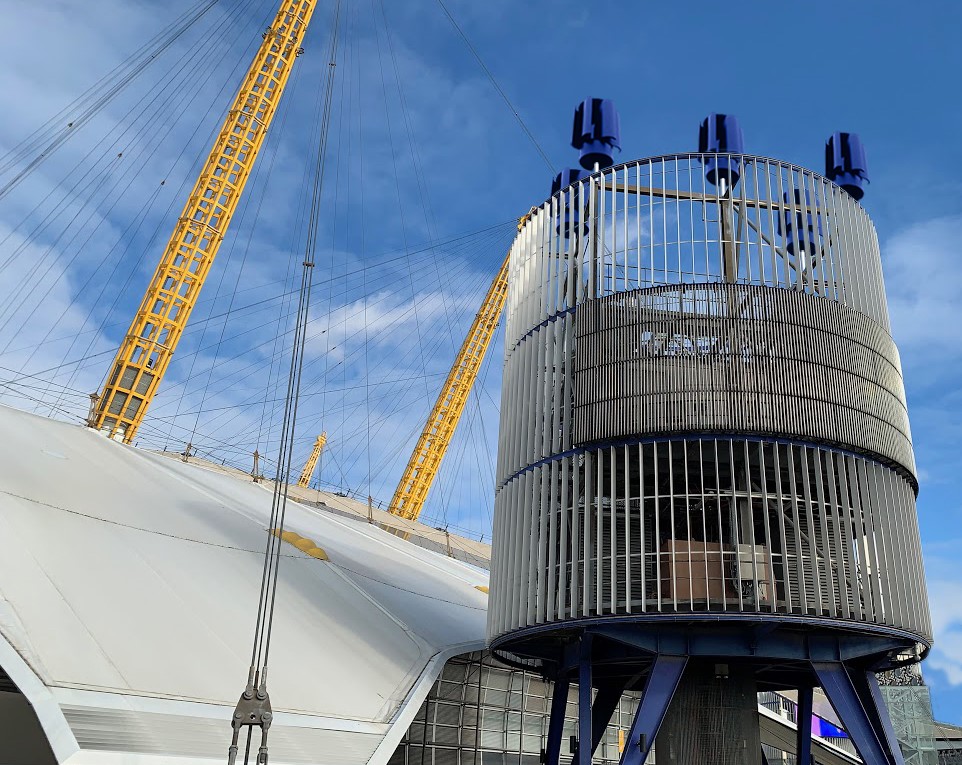
The O2 arena in London's Greenwich neighborhood.
As cities from Addis Ababa to Zagreb celebrate and reflect on the United Nations' World Cities Day, the concept of a community having all of its necessities within a 15-minute walking or biking radius is captivating cities all around the world, and for good reason. The 15-minute city is a deeply intentional, human-centered approach to building communities that are walkable, accessible, safe and, importantly, sustainable.
As populations steadily cluster toward city centers, developers, government officials and urban designers are racing to implement designs that further the 15-minute city. Among them is AEG, the world’s leading sports and live entertainment company, which has revitalized underused urban zones in Los Angeles, Berlin, and London into thriving sports and entertainment districts. At the center of its developments are world-class sports arenas that serve as the centerpieces for newly transformed communities bustling with shops, restaurants, bars, schools, green spaces and public transportation — all within a 15-minute walk from apartment and housing complexes.

The O2 breathes new life into London’s Greenwich neighborhood
On the banks of the Thames River in southeast London, the borough of Greenwich has been the poster child for a budding yet thriving 15-minute city. That’s largely thanks to development spurred by AEG.
The O2, a premium entertainment district headlined by the world’s busiest arena, opened in 2007 and quickly transformed the Greenwich Peninsula into one of the hottest destinations in London. With millions of visitors pouring in from near and far each year to see acts like Bon Jovi and Elton John, other developers were keen to stake their claim on a burgeoning hub. Fourteen years after AEG cut the ribbon on The O2, the area now features restaurants and bars galore, a cinema, activities like climbing and freejumping, parks, office buildings, housing, and a three-year-old premium outlet mall with more than 60 stores. Today, The O2 is interwoven into the fabric of the peninsula and has become a gathering place to live, work and celebrate. It has also created thousands of local jobs and spurred substantial economic growth.
“The notion of the 15-minute city is putting the human at the center of design,” Erik Distler, VP of Sustainability at AEG, told TriplePundit. “Every design is built around having the human and the livability of that individual as the centerpiece. How do we get more pedestrian-accessible nodes within a certain section? How do we eliminate or reduce down vehicle transit and increase our public transit opportunities? Where are there places that are safe and accessible for all ages?”

Sustainability and the 15-minute city
Though the U.N. advocates for city-changing innovations such as The O2, it prioritizes the need to do so sustainably. World Cities Day was introduced in 2014 to promote Sustainable Development Goal 11: make cities and human settlements inclusive, safe, resilient, and sustainable.
AEG has remained a loud and fierce champion of this SDG, advancing the goal in London through The O2’s campaign Good Vibes All Round, which sets in motion the company’s commitment to sustainability, accessibility and community.
“The O2 institutionalized AEG’s commitment to reaching beyond neighborhood boundaries and creating sustainable programs that not only reduce the company’s environmental impact but also improve the lives of people in the surrounding communities," Distler said. "Good Vibes All Round is intersectional across all the different pillars of impact when you think of accessibility, community engagement and environmental sustainability."
Simply, AEG is revolutionizing the way officials and planners should approach sustainable urban development. The O2 district is easily accessible via the Tube, bus, ferry and cable car. AEG even purchased the Thames Clippers, a river boat service that is fully integrated into London’s transportation system and serves 10,000 daily passengers, increasing the options for commuting and traveling from Greenwich to Central London. And if visitors must drive, which only 23 percent do according to a recent company survey, there are charging ports available for electric cars.
The O2 also has an onsite wormery which employs worms to transform food waste into compost that is used for agricultural purposes offsite. The campus relies on renewable energy through a combination of solar panels and newly installed wind turbines, AEG’s latest investment in sustainability. The wind turbines are part of an onsite experiment that the company hopes it can scale up and introduce to its other venues worldwide as a means to cut greenhouse gas emissions.
Even The O2’s very foundation was rooted in sustainability when developers opted to repurpose the Millennium Dome instead of building the entertainment district’s roof from scratch.
The bottom line: Responsible and sustainable design is about serving the community
Beyond sustainability and accessibility, Distler says engaging the community is “fundamental” to creating a 15-minute city that residents can comfortably call home. John Langford, chief operating officer of AEG Europe, agrees that the heart of The O2’s success is community.
“Today on the peninsula, there are schools, residents, businesses and green spaces where people can enjoy themselves,” Langford said. “We’re in the very heart of that community and part of that community.”
This article series is sponsored by AEG and produced by the TriplePundit editorial team.
Images courtesy of AEG
Based in Atlanta, GA, Grant is a nonprofit professional and freelance writer passionate about affordable housing and finding sustainable approaches to international development. A proud graduate of the University of Maryland, Grant spent four months post-grad living in Armenia where he worked for Habitat for Humanity and the World Food Programme. He enjoys playing trivia with friends but is still seeking his first victory - he ceaselessly blames his friends lack of preparation.














